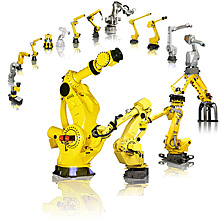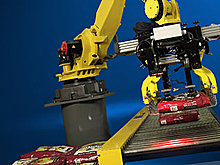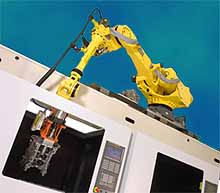Are We Automating Jobs Away?
Robotics and other automation's effects on employment

In the last 200 years 70% of jobs done by American workers have been replaced by automation – and during the next century we will see another automation revolution that replaces 70% of American jobs–again.
Automation isn’t all that new

Before you get upset about this statistic, let’s go back 200 years. At that time 70% of American workers were farmers, and automation over the last 200 years has eliminated all but about 1% of the jobs those workers did. Automation? What kind of automation was available in the 1800’s? Well, with the industrial revolution automation of labor resulted in mechanized plows and harvesters, manufacturing equipment, tractors and other farm equipment, and the now ubiquitous automobile.
So, what’s my point here? That even though 70% of existing American jobs disappeared over the last 200 years, we still yet have a robust labor force and jobs available for most who seek to work.
Facing the changes in modern automation
 We now face another automation revolution as robotic technology grows and expands in the industrial realm. Many American workers worry that their jobs will become obsolete and leave them without the ability to make an income, but the truth is that as robots replace certain functions, new positions will evolve out of the changing face of American industrialization – just like they did as automation replaced functions in farming and manufacturing two centuries ago.
We now face another automation revolution as robotic technology grows and expands in the industrial realm. Many American workers worry that their jobs will become obsolete and leave them without the ability to make an income, but the truth is that as robots replace certain functions, new positions will evolve out of the changing face of American industrialization – just like they did as automation replaced functions in farming and manufacturing two centuries ago.
So, let’s take a look at what robotics offers – what makes it reasonable to replace human labor? First, the cost of robotics continues to decline as technology develops (microchips, miniaturized circuitry, etc.). As those costs come down, developers are able to create less costly ways of doing the drudge work of industry – putting bolts on a car engine, picking up and placing a pallet for loading product, monotonous spot welding – repetitive, boring or dangerous jobs most people don’t care to do. Jobs that are generally low paying.
Secondly, robotics offer something humans can’t deliver – accuracy and unlimited performance. Robots don’t need sick days, coffee breaks or changes in routine. They can perform the exact same motion millions of times without complaint or error. Humans just can’t do that.
Thirdly, productivity increases beyond the capability of the human body. Robots don’t get tired. They keep at the same pace continually. Human bodies just can’t maintain the same pace of repetitive work for long periods, which slows productivity and throughput, and the human body can just go so fast before reaching its upper limits of mobility. Robotics are continually improving and reaching faster speeds.
Are we bringing about the demise of the human labor force?
 So, what’s to come of human labor? It’s not as frightening as it appears. Adding robots to industrial work means that workers now have the opportunity to work in jobs that require imagination, adaptability and decision making skills. Another factor to consider is that our labor force is shrinking as population growth declines. Robots will be replacing positions that might otherwise go unfilled. Additionally, as automation increases, new products and new jobs are created that need additional workers.
So, what’s to come of human labor? It’s not as frightening as it appears. Adding robots to industrial work means that workers now have the opportunity to work in jobs that require imagination, adaptability and decision making skills. Another factor to consider is that our labor force is shrinking as population growth declines. Robots will be replacing positions that might otherwise go unfilled. Additionally, as automation increases, new products and new jobs are created that need additional workers.
So, we’re not so much as going to be out of a job, as we’ll be learning new skills and working in positions that are more satisfying and fulfilling – and enjoying our leisure time more because of all the wonderful things robotics makes possible.
Tags: Robotics, workers force, Automation, ergonomics, Safety & Ergonomics
Scott Stone is Cisco-Eagle's Vice President of Marketing with 35 years of experience in material handling, warehousing and industrial operations. His work is published in multiple industry journals an websites on a variety of warehousing topics. He writes about automation, warehousing, safety, manufacturing and other areas of concern for industrial operations and those who operate them.




